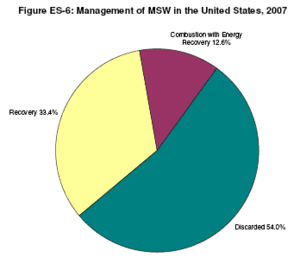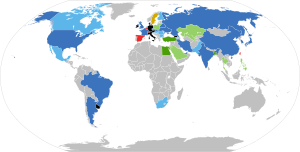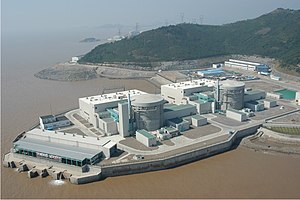Risk & Insurance - April 2011
by Dan Reynolds
The economic downturn and the Great Recession led to the great thinning of the work force. Those that kept their jobs took on that much more. And they knew times were tough, they did the extra work, expanded their expertise and kept their mouths shut, even as their perks were cut, their wages frozen, and some of their colleagues ushered out the door.
A RESUME RIPTIDE
But the tide is always turning and it is turning now. … This time around, it's a different sort of a tidal movement, according to Jeff Schwartz, the McLean, Va.-based principal with Deloitte Consulting and leader of U.S. talent services for the company.
"I don't know that we're seeing a résumé tsunami, but we are certainly seeing a résumé riptide,” Schwartz said. In focused talent segments of the economy, there is talent on the move and there is hunger for that talent.
"Each industry and each sector has a small number of critical workers that have very important skills that are in very high demand and although the aggregate employment level isn't going up, the activity within these critical sectors is incredibly hot right now,” Schwartz said. …
According to study results reported by Deloitte in December 2010, 72 percent of executives surveyed said they foresaw either a moderate or severe talent shortage in their R&D ranks in 2011. The same study found that 56 percent of executives surveyed expected moderate-to-severe talent shortages in executive leadership. The survey reported that 52 percent of executives forecast a moderate-to-severe shortage in sales.
We all know that not all employees are the same. Some, … are more talented and double their value through their commitment. It's those 10 percent of employees who are the most engaged in their work that companies can ill afford to lose, Jane Kwon, a New York-based vice president in the talent and reward group for Aon-Hewitt said. Those are the employees that on the revenue-generation side of the equation, are your innovators. On the stop-loss side, they are the employees who know the business well enough to help you avoid catastrophic loss.
And if you bungle the relationship with that sort of talent? “You run the risk of not having the people who can drive the growth that you and your competitors are focused on,” Deloitte's Schwartz said.
And those sharper employees are the ones, just about right now in the scheme of things, that are evaluating their relationship with their employer and deciding whether they are being cultivated and nurtured, or whether they are being exploited and overworked.
"When we looked at the data, those that are in the highly engaged bucket, they are asking that question more seriously, ‘What is going to motivate me to stay here? “ Kwon, for Aon-Hewitt.said.
"We saw that more than half of them are saying that they are planning to go somewhere else and that is a huge cost to an organization,” Kwon said.
Mary Mosqueda, a St. Louis-based compensation practice leader with Lockton, says rather than focus on just one piece of the compensation puzzle, her firm advises clients to use a “total rewards” approach. … And don't forget, different generations want different things. …
Indeed, the Deloitte study found that Generation Y employees, those under age 30, valued company culture above all else. Baby Boomers, those aged 45 to 64, mostly wanted additional healthcare and pension benefits….
The level of motivation that U.S. employees had to help their companies succeed went down significantly from 2007 to 2008, Kwon said. The factor dropped even more significantly from 2008 to 2009, Kwon said. The Great Recession is likely to have played a part in explaining the 2007-2009 declines. …
… There was a recession - indeed a near depression, according to some - in the United States and Europe. But there wasn't anything close to that in Asia, and that has led to more intense international competition, not just for customers, but for talent as well. “As we come out of the recession we are realizing that it is not as if there is an easy set of markets to sell into right now,” Deloitte's Schwartz said.
Add to that the more intense regulatory environment that we are seeing in this country in the wake of the financial crisis, and that means that managers and senior executives with an effective knowledge of regulatory risk management are that much more valuable. …
"So, it is a different world and the economic state is completely different,” Kwon said.
"Employees are sending the message that it's no longer about what I can give to the organization, it is about what the organization is willing to give to me."
Tuesday, April 19, 2011
Monday, April 18, 2011
Waste To Energy Doesn't Just Go Carbon Free. It's Carbon Negative!! Get it!
The Green Living Guy blog
Wednesday, April 13, 2011 at 12:21PM
Source: Waste Management
 Image via Wikipedia… The U.S. Environmental Protection Agency has stated that the nation's waste-to-energy plants produce electricity with "less environmental impact than almost any other source of electricity."
Image via Wikipedia… The U.S. Environmental Protection Agency has stated that the nation's waste-to-energy plants produce electricity with "less environmental impact than almost any other source of electricity."EPA's Municipal Solid Waste Decision Support Tool has demonstrated that a modern waste-to-energy plant provides for the avoidance of greenhouse gases through three different operations:
- For every megawatt of electricity generated through the combustion of solid waste, a megawatt of electricity from conventional, e.g., coal or oil-fired, power plants is avoided, creating a new savings of emissions of greenhouse gases, i.e., carbon dioxide.
- A modern municipal waste-to-energy facility separates ferrous and/or nonferrous metals for recycling. This is more energy efficient than mining virgin materials for the production of new metals such as steel. As a result, there is a significant energy savings and additional avoidance of greenhouse gas emissions.
Image via WikipediaWhen a ton of solid waste is processed in a waste-to-energy facility, the methane that would have been generated if it were sent to a landfill is avoided. … Methane is a potent greenhouse gas, i.e., twenty-three times more potent than carbon dioxide.
 Image via WikipediaThe U.S. Conference of Mayors, through the U.S. Mayors Climate Protection Agreement, has embraced the contribution of waste-to-energy to reduce greenhouse gas emissions. …
Image via WikipediaThe U.S. Conference of Mayors, through the U.S. Mayors Climate Protection Agreement, has embraced the contribution of waste-to-energy to reduce greenhouse gas emissions. … Image via WikipediaThe breadth of support for the GROCC position is evidenced by those that have signed the joint statement, including Dr. James Hansen of the NASA Goddard Institute for Space Studies and David Hawkins of the Natural Resources Defense Council's Climate Center, as well as entities as diverse as General Electric, Florida Power and Light, and Environmental Defense Fund.
Image via WikipediaThe breadth of support for the GROCC position is evidenced by those that have signed the joint statement, including Dr. James Hansen of the NASA Goddard Institute for Space Studies and David Hawkins of the Natural Resources Defense Council's Climate Center, as well as entities as diverse as General Electric, Florida Power and Light, and Environmental Defense Fund.Related articles
- TVA Agrees to Shut Down 18 Coal-Fired Boilers and Curb Emissions (nytimes.com)
- How does recycling help reduce global warming? (greenanswers.com)
- Economic Slump and Energy Efficiency Drive U.S. Greenhouse Gas Emissions Drop (scientificamerican.com)
Thursday, April 14, 2011
Nuclear Realism after Fukushima
A hasty, large-scale movement away from nuclear power would not resolve most of the issues raised by the ongoing crisis in Japan. Instead, we need more thoughtful discussions now about the energy systems of the future.
strategy+business magazineby Tom Flaherty, Joe van den Berg, and Nicolas Volpicelli
Within a few days of a tsunami striking Japan’s Fukushima Daiichi nuclear reactors on March 11, a fierce debate had been fueled about the implications for energy policies around the world. … Unfortunately, we will hear many such oversimplified, rhetorically heated arguments in the weeks and months to come.
 Image via WikipediaAs of April 2011, any debate about the implications of this crisis for the energy industry is premature. It will take into the summer to gather enough facts about the incident to draw reasonable conclusions about the safety and operating practices at this facility — and several more months to establish how those findings should apply to other nuclear plants and other countries. …
Image via WikipediaAs of April 2011, any debate about the implications of this crisis for the energy industry is premature. It will take into the summer to gather enough facts about the incident to draw reasonable conclusions about the safety and operating practices at this facility — and several more months to establish how those findings should apply to other nuclear plants and other countries. …Accepting the Source as Essential
Any sober analysis of the global energy situation would have to conclude that nuclear power is an essential fuel source for many geographies. In a growing global economy, new advances in other forms of energy generation are not sufficient to keep pace with demand, especially if there is a consensus that coal generation should be reduced. …In many countries, a long-term shift away from coal to lower-emission fossil fuels and some renewables is in progress; this shift has already brought environment-related protests over natural gas drilling, changes in land use, and higher power prices. … But, at least for now, they can only contribute to meeting demand; they cannot supplant current sources. … Widespread use of renewables will require dramatic technological developments in energy storage and production, which are not currently available or even foreseeable in the near term.
That leaves traditional fossil fuels, such as coal, gas, and oil. … it is not clear whether available oil and natural gas resources will be sufficient to meet the world’s growing demand for transportation or electricity. In addition, in the developed world, a significant amount of coal generation is slated to be retired during the next 10 years, because of aging facilities and relative inefficiency, which further exacerbates future supply gaps….
 Image via Wikipedia… Though nuclear energy currently makes up only 15 percent of electricity generation worldwide, it constitutes 20 to 30 percent of the energy supply in the U.S., Japan, and Germany, and 75 percent in France. If these countries, and others that rely partially on nuclear power, decide that it should not be part of their long-term energy mix, they will need to engage in challenging and broad new efforts in pursuit of other forms of energy generation. …
Image via Wikipedia… Though nuclear energy currently makes up only 15 percent of electricity generation worldwide, it constitutes 20 to 30 percent of the energy supply in the U.S., Japan, and Germany, and 75 percent in France. If these countries, and others that rely partially on nuclear power, decide that it should not be part of their long-term energy mix, they will need to engage in challenging and broad new efforts in pursuit of other forms of energy generation. …In short, in every conceivable future, nuclear power is a necessary long-term power source, if only because so many nations count it as part of their short-term portfolio now.
Adaptation and Evolution
How, then, should the energy industry and policymakers adapt after Fukushima Daiichi? First, the public will certainly place a high burden of proof on the industry to demonstrate that nuclear reactors will stand up to human-induced catastrophes or unavoidable forces of nature more effectively — even extraordinary “black swan” events like the tsunami that struck Japan. …… Both government regulators and the industry should be prepared to improve plant designs and operating protocols still further, with the aim of strengthening long-term safety and reliability. Industry participants need to step back and approach self-assessment and public scrutiny with an open mind, as a welcome step toward an even safer operating environment and thus a more secure long-term industry. …
 Image via WikipediaTransparency will be a major factor in gaining acceptance. …Policymakers and regulators will need to emphasize solutions that genuinely advance the state of industry performance and reduce risk, rather than simply layer on new requirements with dubious safety and public benefits.
Image via WikipediaTransparency will be a major factor in gaining acceptance. …Policymakers and regulators will need to emphasize solutions that genuinely advance the state of industry performance and reduce risk, rather than simply layer on new requirements with dubious safety and public benefits.Where possible, safety reviews should accelerate a shift to newer technologies. … It will still take several years to bring new plants online, and all existing power sources will be needed in the meantime — …. Conversely, if the crisis results in a slowdown in new nuclear plant construction, it could paradoxically result in extending the operating lives of older plants.
For the long term, countries will need to intensify emerging energy technology research and development. …
… No matter what specific technical outcome emerges, increased investment in nuclear safety will increase the costs of capital investment and operations. … The cost of investing in increased safety will probably force energy prices somewhat higher, but not nearly as high as would a wholesale shift away from nuclear power. …
One potential positive legacy of this situation — a way to commemorate those who have been personally affected by it — would be a comprehensive and thoughtful energy policy that would align government objectives, industry development, and consumer impact. Such a result is going to require more tempered and extended conversation than the current debate has elicited. Instead of arguing for immediate advantage, energy advocates and industry leaders have a chance to think pragmatically about the future. Crises have sometimes led to breakthroughs in capability. Is there some similar possibility here? If so, it must include a recognition of the platform that nuclear power provides for the world’s economy already — and all the ways in which the world’s energy mix needs to develop over the next 15 to 20 years.
Author Profiles:
- Tom Flaherty is a senior partner with Booz & Company based in Dallas. He works with clients in the electric and gas sectors.
- Joe van den Berg is a partner with Booz & Company based in Washington, D.C., who focuses on strategic opportunities available to energy companies.
- Nicolas Volpicelli is a principal with Booz & Company based in Florham Park, N.J., who works with the aerospace and defense industries. Previously, he served with the U.S. Navy as a first lieutenant and reactor propulsion division officer.
- Also contributing to this article was Booz & Company Senior Associate Owen Ward
Related articles
- Nuclear forum backs safety push after Japan crisis - Reuters (news.google.com)
- Fukushima nuclear plant: The tragedy there shouldn't cause us to abandon nuclear power. (slate.com)
- India revamping safety of its nuclear plants (seattletimes.nwsource.com)
Self-Insured Numbers Higher Than Expected, and Growing
A new report reveals that the federal government was underestimating the number of employers that self-fund employee health benefits. Now, with healthcare reform, their numbers are set to grow.
Risk & Insurance Online
By JULIE LIEDMAN, a freelance writer who lives in Philadelphia
 Image via WikipediaOn March 23, the one-year anniversary of the Patient Protection and Affordable Care Act (PPACA), the U.S. Department of Labor issued its first annual report on self-insured employee health benefits plans, mandated by the legislation. …
According to the DOL report, about 12,000 health plans filing a Form 5500 for 2008--the latest year for which complete data is are available--were self-insured, and 5,000 mixed self-insurance with insurance. Self-insured plans covered 22 million people, while mixed plans covered 25 million. Health benefits plans covering private-sector employees must file the form if they cover 100 or more participants or hold assets in trust. Because many self-insured health plans do not meet the filing requirements and therefore haven't filed the form, however, the total number of self-insured plans probably is underestimated. The DOL report acknowledged this, …
Image via WikipediaOn March 23, the one-year anniversary of the Patient Protection and Affordable Care Act (PPACA), the U.S. Department of Labor issued its first annual report on self-insured employee health benefits plans, mandated by the legislation. …
According to the DOL report, about 12,000 health plans filing a Form 5500 for 2008--the latest year for which complete data is are available--were self-insured, and 5,000 mixed self-insurance with insurance. Self-insured plans covered 22 million people, while mixed plans covered 25 million. Health benefits plans covering private-sector employees must file the form if they cover 100 or more participants or hold assets in trust. Because many self-insured health plans do not meet the filing requirements and therefore haven't filed the form, however, the total number of self-insured plans probably is underestimated. The DOL report acknowledged this, …
"We expect a larger interest in self-insurance than ever before when additional regulations such as exchanges, 'pay-or-play' and vouchers go into effect (by 2014)," said Mike Ferguson, chief operating officer of the Self-Insurance Institute of America.
By 2014, PPACA requires that health insurance be more affordable and easier to purchase for small businesses and individuals through statewide exchanges. Employers with 50 or more full-time employees must either provide specified minimum levels of coverage to their employees or pay an excise tax. This is referred to as "pay or play."…
Smaller employers may find it financially advantageous to pay for their own firm's risk than to be subject to the new provisions.
 Image via WikipediaPurchasing a plan through the exchange, for instance, where premiums will be a function of the broader risk pool and subject to risk adjustment, could be costly, Ferguson said. If enough small firms with healthier enrollees opt out of a state's small-group market in 2014, that state exchange could experience adverse selection.
"Based on anecdotal feedback we've gotten from our members," said Ferguson, "they've digested the regulations currently in place, adapted to any new requirements and life goes on."
Image via WikipediaPurchasing a plan through the exchange, for instance, where premiums will be a function of the broader risk pool and subject to risk adjustment, could be costly, Ferguson said. If enough small firms with healthier enrollees opt out of a state's small-group market in 2014, that state exchange could experience adverse selection.
"Based on anecdotal feedback we've gotten from our members," said Ferguson, "they've digested the regulations currently in place, adapted to any new requirements and life goes on."
April 12, 2011
Copyright 2011© LRP Publications
Risk & Insurance Online
By JULIE LIEDMAN, a freelance writer who lives in Philadelphia
 Image via WikipediaOn March 23, the one-year anniversary of the Patient Protection and Affordable Care Act (PPACA), the U.S. Department of Labor issued its first annual report on self-insured employee health benefits plans, mandated by the legislation. …
Image via WikipediaOn March 23, the one-year anniversary of the Patient Protection and Affordable Care Act (PPACA), the U.S. Department of Labor issued its first annual report on self-insured employee health benefits plans, mandated by the legislation. …"We expect a larger interest in self-insurance than ever before when additional regulations such as exchanges, 'pay-or-play' and vouchers go into effect (by 2014)," said Mike Ferguson, chief operating officer of the Self-Insurance Institute of America.
By 2014, PPACA requires that health insurance be more affordable and easier to purchase for small businesses and individuals through statewide exchanges. Employers with 50 or more full-time employees must either provide specified minimum levels of coverage to their employees or pay an excise tax. This is referred to as "pay or play."…
Smaller employers may find it financially advantageous to pay for their own firm's risk than to be subject to the new provisions.
 Image via WikipediaPurchasing a plan through the exchange, for instance, where premiums will be a function of the broader risk pool and subject to risk adjustment, could be costly, Ferguson said. If enough small firms with healthier enrollees opt out of a state's small-group market in 2014, that state exchange could experience adverse selection.
Image via WikipediaPurchasing a plan through the exchange, for instance, where premiums will be a function of the broader risk pool and subject to risk adjustment, could be costly, Ferguson said. If enough small firms with healthier enrollees opt out of a state's small-group market in 2014, that state exchange could experience adverse selection.April 12, 2011
Copyright 2011© LRP Publications
Related articles
- Fight brews over who benefits from health pool (charlotte.news14.com)
- Catastrophe looming thanks to Obamacare | detnews.com | The Detroit News (gds44.wordpress.com)
Friday, April 8, 2011
Office Kitchens not Just for Getting Coffee
April 7, 2011 (PLANSPONSOR.com) - New survey results from Staples Advantage, the business- Image via Wikipediato-business division of Staples, Inc., suggest that having a fully stocked kitchen, with food, coffee and amenities, can lead to more content and productive employees.
Image via Wikipediato-business division of Staples, Inc., suggest that having a fully stocked kitchen, with food, coffee and amenities, can lead to more content and productive employees.
The survey, which polled U.S. office workers at nearly 200 businesses of all sizes, found that 73% said a well-stocked kitchen would make them happier at work, while 57% indicated that kitchen amenities could lead to a more productive workforce. Image via WikipediaThe survey suggests more than 85 million people leave the office routinely to get coffee. Respondents estimated each trip taking 20 to 40 minutes, equating to more than two billion minutes each day, or 10.6 billion hours per year, of lost productivity.
Image via WikipediaThe survey suggests more than 85 million people leave the office routinely to get coffee. Respondents estimated each trip taking 20 to 40 minutes, equating to more than two billion minutes each day, or 10.6 billion hours per year, of lost productivity. Nearly 80% of respondents said it was important to get away from their desks from time to time to take small breaks in order to stay focused. Many workers hope to find snacks, paper goods and cutlery in their office kitchen that they can use throughout the day.
More than 85% said they would want healthy snacks and beverages added to their office kitchen. In addition, according to the press release, employees hope to find a variety of products, including coffee cups (75%), forks/knives/spoons (72%), as well as plates and other paper products (65%) stocked by their company.
Protecting the environment was noted as a priority for those surveyed, and 96% would like to see recycling bins in the office.
Rebecca Moore
editors@plansponsor.com
Related articles
- New Theory on Personal Workspace in the 21st Century (compassioninpolitics.wordpress.com)
- The One Office Perk You MUST Splurge On (businessinsider.com)
Subscribe to:
Posts (Atom)










